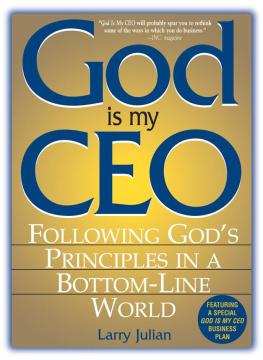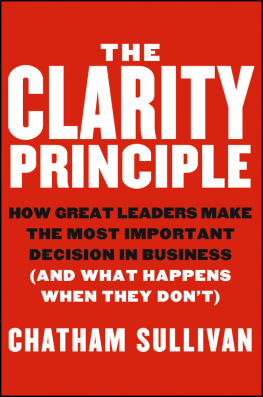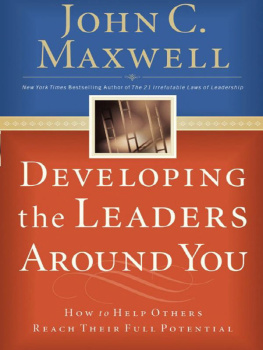Coleman John - Passion & purpose: stories from the best and brightest young business leaders
Here you can read online Coleman John - Passion & purpose: stories from the best and brightest young business leaders full text of the book (entire story) in english for free. Download pdf and epub, get meaning, cover and reviews about this ebook. City: Boston;Massachusetts, year: 2012;2011, publisher: Harvard Business Review Press, genre: Business. Description of the work, (preface) as well as reviews are available. Best literature library LitArk.com created for fans of good reading and offers a wide selection of genres:
Romance novel
Science fiction
Adventure
Detective
Science
History
Home and family
Prose
Art
Politics
Computer
Non-fiction
Religion
Business
Children
Humor
Choose a favorite category and find really read worthwhile books. Enjoy immersion in the world of imagination, feel the emotions of the characters or learn something new for yourself, make an fascinating discovery.

- Book:Passion & purpose: stories from the best and brightest young business leaders
- Author:
- Publisher:Harvard Business Review Press
- Genre:
- Year:2012;2011
- City:Boston;Massachusetts
- Rating:4 / 5
- Favourites:Add to favourites
- Your mark:
- 80
- 1
- 2
- 3
- 4
- 5
Passion & purpose: stories from the best and brightest young business leaders: summary, description and annotation
We offer to read an annotation, description, summary or preface (depends on what the author of the book "Passion & purpose: stories from the best and brightest young business leaders" wrote himself). If you haven't found the necessary information about the book — write in the comments, we will try to find it.
Coleman John: author's other books
Who wrote Passion & purpose: stories from the best and brightest young business leaders? Find out the surname, the name of the author of the book and a list of all author's works by series.
Passion & purpose: stories from the best and brightest young business leaders — read online for free the complete book (whole text) full work
Below is the text of the book, divided by pages. System saving the place of the last page read, allows you to conveniently read the book "Passion & purpose: stories from the best and brightest young business leaders" online for free, without having to search again every time where you left off. Put a bookmark, and you can go to the page where you finished reading at any time.
Font size:
Interval:
Bookmark:

Copyright 2012 Harvard Business School Publishing Corporation
All rights reserved
No part of this publication may be reproduced, stored in, or introduced into a retrieval system or transmitted, in any form or by any means (electronic, mechanical, photocopying, recording, or otherwise), without the prior permission of the publisher. Requests for permission should be directed to , or mailed to Permissions, Harvard Business School Publishing, 60 Harvard Way, Boston, Massachusetts 02163.
ISBN: 978-1-4221-6266-8
Many baby boomers like to characterize the Facebook generation as entitled slackers. In reading the amazing stories of the leaders in Passion and Purpose, you quickly realize that nothing could be further from the truth. The reality is that this new generation of leaders is committed to making a difference and is ready to leadnot tomorrow, but now.
The authors of this remarkable collection of twenty-six stories, all written by exceptional young leaders, were deeply impacted by the leadership failures of 2008 that led to the Great Recession. The three authors conclude, We have faith in the young generations of leaders who have witnessed the lessons of the crisis and are now seeking to learn from the mistakes that were made and offer a new vision for the future.
Georgian John Coleman believes that business offers solutions to some of the most pressing problems we face. Filipino Oliver Segovia quotes the local saying, He who doesnt appreciate his roots shall never succeed. Australian Daniel Gulati saw firsthand examples of how organizations can meet their financial goals and simultaneously make positive contributions to society.
Unwilling to wait their turn in line, these leaders are already having enormous impact. Look at the global citizens being developed by Abby Falik, the transformation of leadership that Jon Doochin is leading at Harvard College, Marine Captain Rye Barcotts initiative to help the slums of Kenyas Kibera become a safe community that works for everyone, and Katie Laidlaws efforts to make agriculture in Tanzania profitable for all. Theirs are just a few of the initiatives that vividly illustrate how this generation of leaders really is different from mine.
Anthropologist Margaret Mead once said, Never doubt the power of a small group of people to change the world. Indeed, it is the only thing that ever has. Through their initiatives, young leaders are confirming Meads wisdom.
My generation started out just as idealistically as these young leaders. We were kids of the Kennedy era who flocked to Washington, D.C., Selma, and Watts to try to change the world. Somewhere along the way we lost sight of that idealism. Was it the futility of the Vietnam war and the assassinations of the Kennedy brothers and Martin Luther King, Jr., or were we seduced by flawed economic theories into believing that self-interest should take precedence over the common good? Whatever the answers, the leadership failures of the last decadefrom the fall of Enron through the economic meltdown of 2008have vividly demonstrated the flaws in twentieth-century leadership and the need for a new generation of leaders to take charge.
The response of this new generation, as these stories vividly illustrate, is to use their talents now to make a positive impact in helping others. As a professor of management practice at Harvard Business School the past eight years, I have had the privilege of working closely with several of these leaders and many more like them.
After completing my tenure as CEO of Medtronic in 2001 and board chair in 2002, I took a working sabbatical in Switzerland to teach at two leading Swiss institutions. It was there that I decided to devote myself for the next decade to helping develop the next generation of leaders, from MBA students to the new generation of corporate CEOs. In early 2004 I returned to my alma mater, Harvard Business School, to help launch a new course, Leadership and Corporate Accountability, and later created Authentic Leadership Development, a course based on leading from within and built around six-person Leadership Development Groups.
During these years I have spent hundreds of hours in the classroom and many more in private discussions with students in my office. Through these open, thoughtful, often poignant talks, I have learned just how committed these young leaders are about using their talents to have an impact. They are willing to work countless hours to realize their dreams, yet they also want to lead integrated lives. I have seen them follow their hearts to unite people around common causes, and the impact has often been stunning.
Their approach to leadership differs sharply from that of the baby boomer generation. Command-and-control is out. So is exerting power over others. They eschew bureaucracy, hierarchical organizations, and internal politics. Thats why many are opting to start their own organizations rather than joining established institutions.
The focus of their leadership is to build on their roots and align people around a common purpose and shared values. They recognize that they cannot accomplish their goals by using power to control others, as so many in my generation did. Instead, they amplify their limited power by empowering others to take on shared challenges.
Their leadership style is collaborative, not autocratic. Nor are they competitive with their peers. They seek to surround themselves with the most talented people representing a wide range of skills that can be helpful in achieving their aims. They care little who gets the credit, so long as their mutual goals are achieved. Most of all, these young leaders seek to serve, using their gifts and their leadership abilities.
One of the characteristics of this new generation of leaders is their ability to move easily between the for-profit, nonprofit, and government sectors. In fact, thats because many of them have worked in all three sectors. They have firsthand knowledge of how people in each of these sectors think, how they measure success, and how they get things done. A number of the contributors to this book have joint masters degrees in government and business, with a substantial dose of social enterprise courses and projects.
This broad perspective is increasingly important because developing workable solutions to the worlds intractable problemsglobal health, energy and the environment, education, poverty and jobs, and global peacerequires multisector approaches. For example, take the challenges of AIDS in Africa. It isnt sufficient for pharmaceutical makers like GlaxoSmithKline to give their AIDS drugs away. It takes support from local governments to get the drugs to the people who need them most, NGOs like Doctors Without Borders to administer the drugs to HIV patients, and funds from global organizations like the World Health Organization and the Bill & Melinda Gates Foundation. These emerging leaders, with the diversity of experiences they have accumulated before the age of thirty, understand how to bring people together from these organizations and get them to collaborate to solve major problems.
Thats what former Marine Captain Rye Barcott is doing to address the problem of poverty in Kibera, Nairobis largest slum. While still a student at the University of North Carolina, Barcott formed Carolina for Kibera, investing $26 and combining it with the sweat equity of nurse Tabitha Festo and a local youth named Salim Mohamed. Incredibly, he was able to build this new organization while serving for five years as a counterintelligence officer in Bosnia, Iraq, and the Horn of Africa.
Barcott sees similarities between the tactics he used in building the Kibera community and the Marines task in community building in war-torn towns like Fallujah, Iraq. He writes, I feel fortunate to have been able to work across the public, private, and nonprofit sectors at a young age, and I aspire to continue to incorporate such a balance throughout my life. The solutions to our worlds toughest problems, such as the growth of megaslums, require full engagement and collaboration from each sector, and we have no time to waste.
Font size:
Interval:
Bookmark:
Similar books «Passion & purpose: stories from the best and brightest young business leaders»
Look at similar books to Passion & purpose: stories from the best and brightest young business leaders. We have selected literature similar in name and meaning in the hope of providing readers with more options to find new, interesting, not yet read works.
Discussion, reviews of the book Passion & purpose: stories from the best and brightest young business leaders and just readers' own opinions. Leave your comments, write what you think about the work, its meaning or the main characters. Specify what exactly you liked and what you didn't like, and why you think so.










